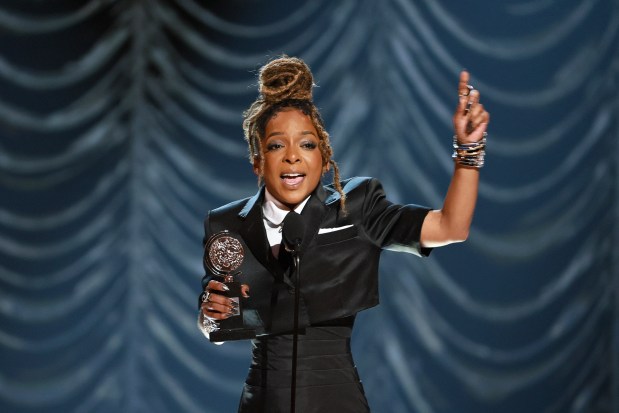I opened Dennis Yi Tenen’s slim new volume, “Literary Theory for Robots: How Computers Learned to Write,” expecting to be irritated.
It was the subtitle, “How Computers Learned to Write,” that worried me. Large language models, of which ChatGPT is one example, cannot “write” in the way humans do. They can generate syntax but given that such models cannot think or feel, and work without any underlying intent around message or communication, to my mind they cannot “write.”
I knew that as a former software engineer, and now professor of English and comparative literature at Columbia University, Dennis Yi Tenen also knew this, so I wondered why he was giving credence to an illusion.
As I read, my initial irritation faded and morphed into appreciation, before finishing in a place of significant gratitude for the journey Yi Tenen takes the reader on through this short history of machine-generated text.
That journey starts in the 14th century with Ibn Khaldun, the great scientist of the Middle Ages, who describes a device called a zairajah, a series of images that then correspond to a table with squares holding letters and numbers. Questions would be asked, the symbols would be consulted and then turned into language derived from the chart. To me, it sounds a bit like a hyper-sophisticated Ouija board.
Khaldun is just the first of many who believed they could corral language itself, and from that language divine hidden truths.
In the latter part of the 17th century, Gottfried Wilhelm Leibniz — the originator of calculus — thought it was possible to create a “universal encyclopedia” that would consist of interrelated tables filled with information that could be combined in ways that would explain all the operations of the natural world.
Ada Lovelace — considered many to be the first computer programmer — worked with Charles Babbage on their “analytical engine,” a machine that, in theory, could produce an answer to any query, it was just a matter of finding the right templates. Lovelace and Babbage were working in the 1820s.
Yi Tenen’s purpose in walking through this history is twofold. One is to show that the impulse to subject humanity to technological mediation is nothing new. The second is to show how technological innovation advances slowly and fitfully, until all of a sudden it moves very quickly.
This results not so much in a debunking of the current hype around generative AI and large language models, but rather a deep contextualization of what many of us are experiencing as a radical change. This radical change has been happening over hundreds of years. As someone who is concerned about the seeming embrace of this technology without what I view as sufficient care and consideration, I appreciate this perspective. Yi Tenen is clear that generative AI is a significant technological breakthrough, no doubt, but the way it challenges us to consider our own humanity in relationship to technology is nothing new.
In the end, the book is simultaneously not at all about artificial intelligence while being entirely about artificial intelligence. In the conclusion, given a tongue-in-cheek chapter titled “9 Big Ideas for an Effective Conclusion,” Yi Tenen walks us through some ways of thinking about this technology that we should heed going forward.
The most important of the nine points is that “machines alone cannot become moral agents.” Through his use of history and philosophy, Yi Tenen reminds us that technology cannot exist independently of its creators and users, and ultimately it is we humans who hold the final responsibility for technology’s impact on the world.
This is a book that makes you a little wiser in realizing that responsibility.
John Warner is the author of “Why They Can’t Write: Killing the Five-Paragraph Essay and Other Necessities.”
Book recommendations from the Biblioracle
John Warner tells you what to read based on the last five books you’ve read.
1. “Myth America: Historians Take on the Biggest Legends and Lies About Our Past” by Kevin Kruse and Julian Zelizer
2. “Killers of the Flower Moon: The Osage Murders and the Birth of the FBI” by David Grann
3. “Black AF History: The Un-Whitewashed Story of America” by Michael Harriot
4. “Poverty, by America” by Matthew Desmond
5. “Confessions” by Kanae Minato
— Dave C., Lombard
I think Ivy Pochoda’s novel, “Visitation Street” has the right combination of urban life and suspense to be a good fit for Dave.
1. “The Good Lord Bird” by James McBride
2. “System Collapse” by Martha Wells
3. “Crook Manifesto” by Colson Whitehead
4. “North Woods” by Daniel Mason
5. “Resurrection Walk” by Michael Connelly
— Paul R., Wauwatosa, Wisconsin
This book is a bit of a doozy in its scope and sprawl, but I think Paul is up to the task, “Cloud Cuckoo Land” by Anthony Doerr.
1. “The Innocent” by David Baldacci
2. “Cat and Mouse” by James Patterson
3. “Innocent” by Scott Turow
4. “The Exchange” by John Grisham
5. “Resurrection Walk” by Michael Connelly
— Al P., Carol Stream
“Since We Fell” by Dennis Lehane has the requisite twists and turns combined with characters you can root for that seem to characterize Al’s reading preferences.
Get a reading from the Biblioracle
Send a list of the last five books you’ve read and your hometown to biblioracle@gmail.com.




